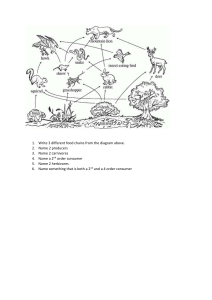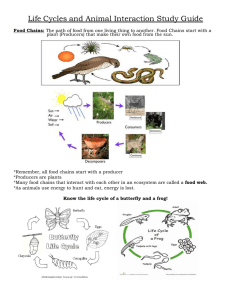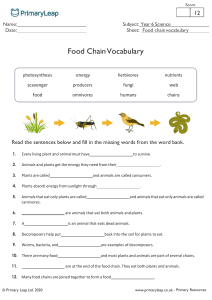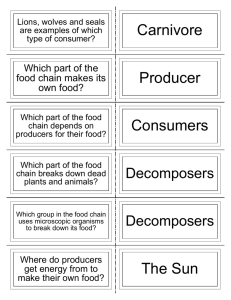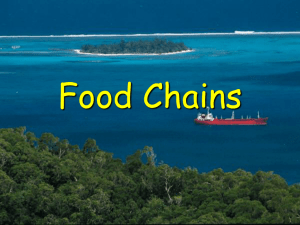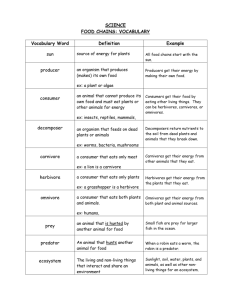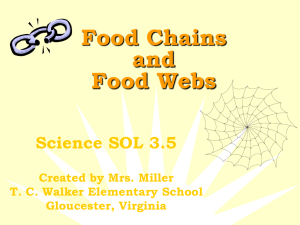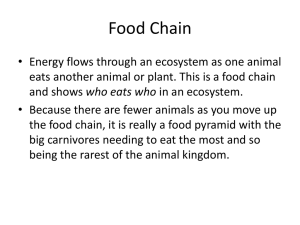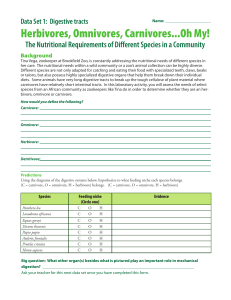Life Cycles and Animal Interaction Study Guide
advertisement
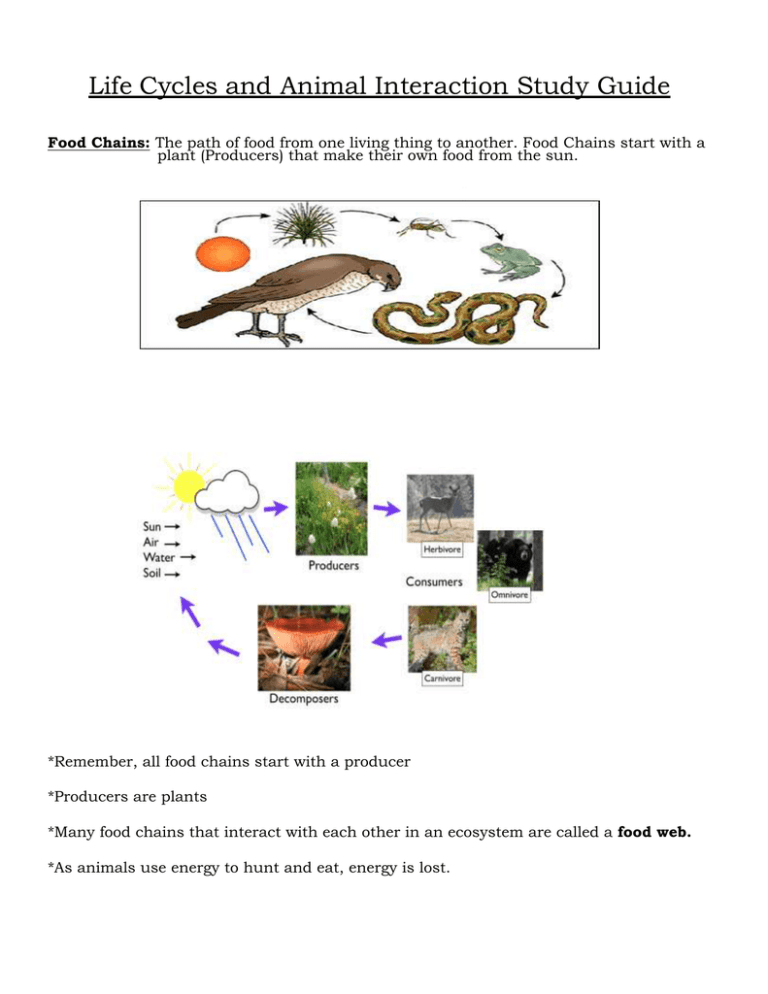
Life Cycles and Animal Interaction Study Guide Food Chains: The path of food from one living thing to another. Food Chains start with a plant (Producers) that make their own food from the sun. *Remember, all food chains start with a producer *Producers are plants *Many food chains that interact with each other in an ecosystem are called a food web. *As animals use energy to hunt and eat, energy is lost. Key Vocabulary: producer A living thing that makes its own food. Plants use the energy from the sun to make their own food. Plants are producers because they use the food they make to live and grow. consumer A living thing that eats other living things as food. Animals are consumers because they eat plants and/or other animals for their food. Consumer can be grouped (or classified) by the kinds of food they eat. Consumers include herbivores, carnivores, and omnivores. herbivore An animal that eats plants to get food energy. Herbivores typically have round, flat teeth. They use their large, ridged molars for grinding the plants. Examples of herbivores include sheep, deer, moose, elephants, cows, and rabbits. carnivore An animal that eats other animals to get food energy. Carnivores typically have sharp canine teeth to help catch prey and tear the meat when they eat. Carnivores must often hunt and kill their food. Many carnivores have claws or sharp beaks to shred meat. Examples of carnivores include lions, tigers, cats, wolves, owls, polar bears, and sharks. An animal that eats plants and other animals to get food energy. Omnivores have both types of teeth—flat, round teeth and longer, sharp teeth. Examples of omnivores include humans, brown bears, raccoons, birds, and turtles. omnivore decomposer A living thing that breaks down dead things for food. Decomposers also break down the wastes of living things. Examples of decomposers include earthworms, ants, bacteria, and fungi such as mushrooms. Predator An animal that hunts another animal. Prey An animal that is hunted by a predator.
